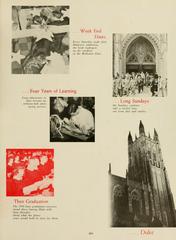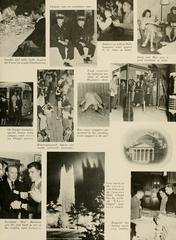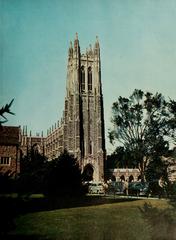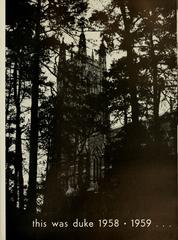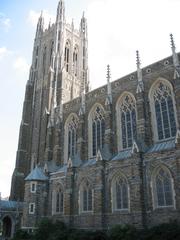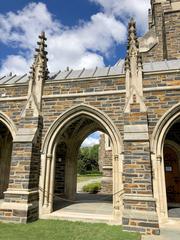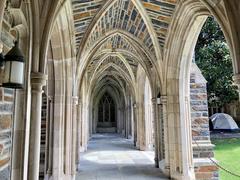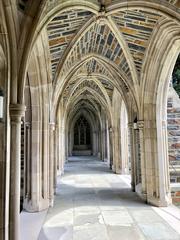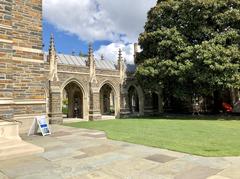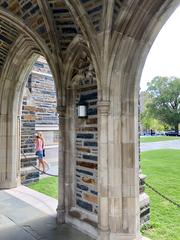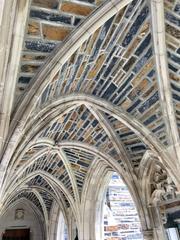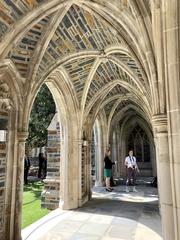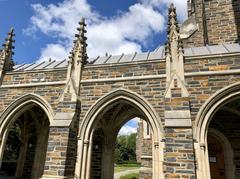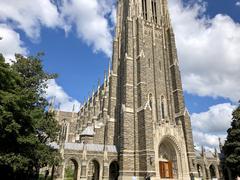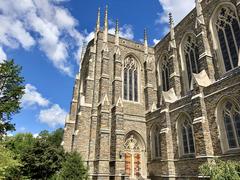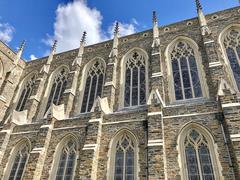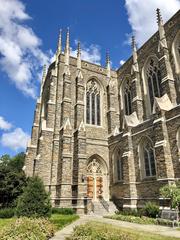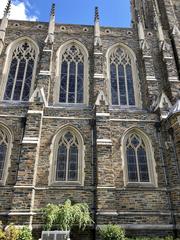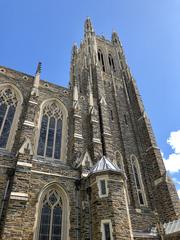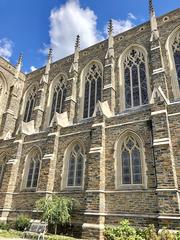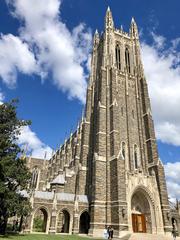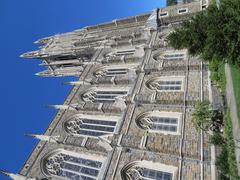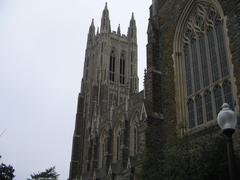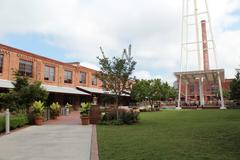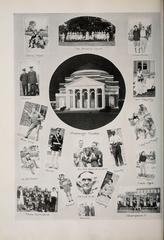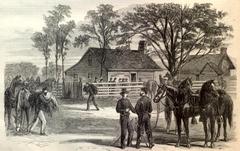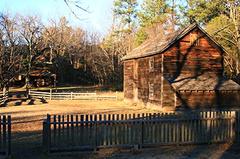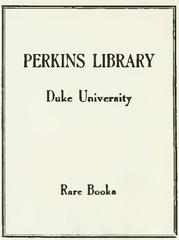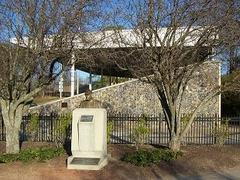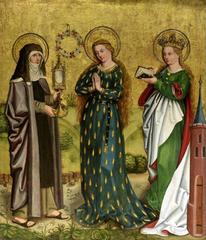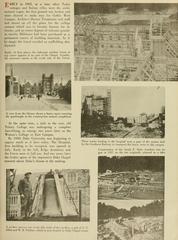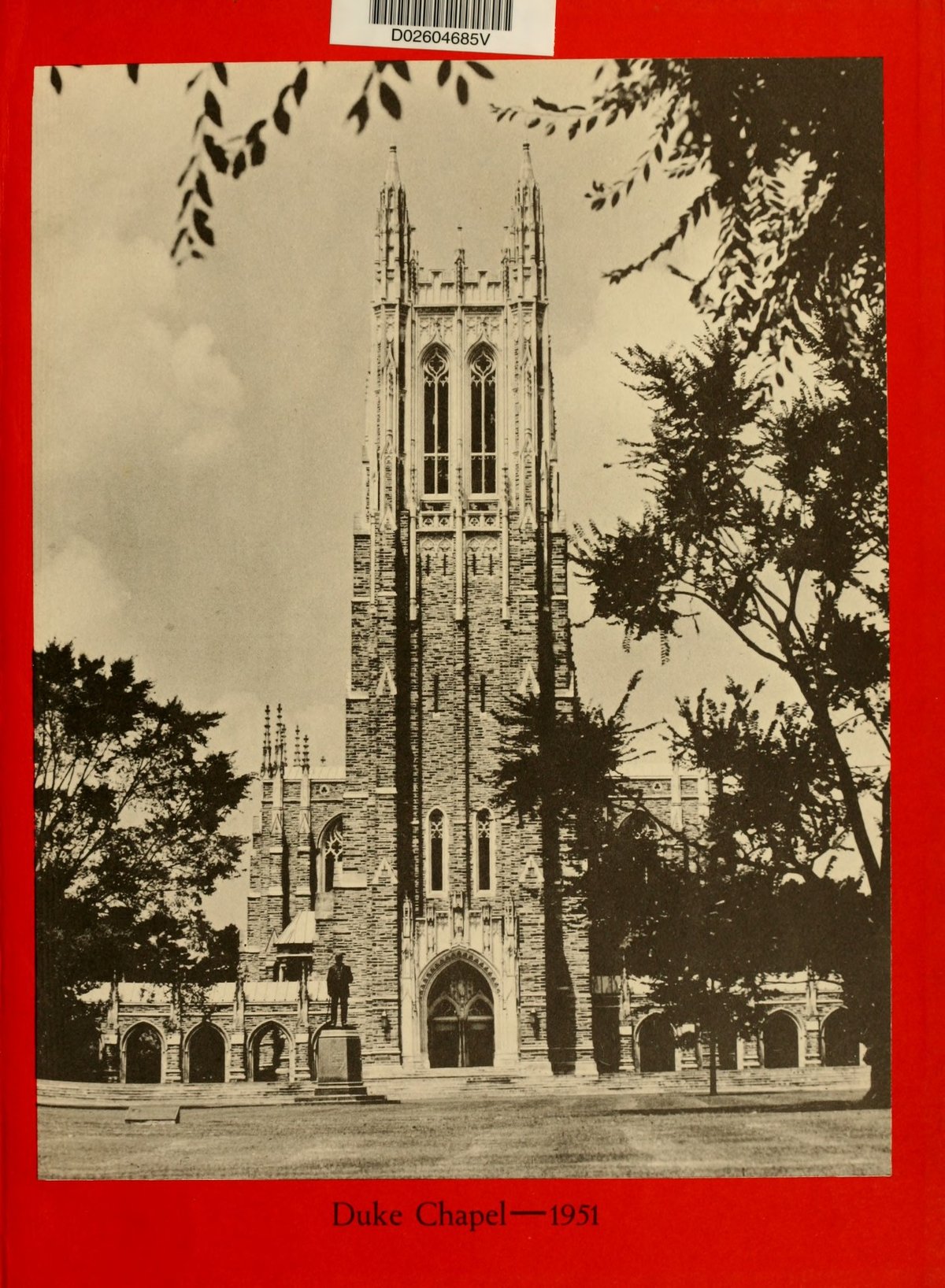
Duke Chapel Visiting Hours, Tickets, and Durham Historical Sites Guide
Date: 14/06/2025
Introduction: Duke Chapel’s Legacy in Durham
Duke Chapel, the architectural crown of Duke University’s West Campus in Durham, North Carolina, is celebrated for its striking Collegiate Gothic design and profound cultural, spiritual, and musical impact. Since its dedication in 1935, the Chapel has served as a beacon of faith, learning, and community, drawing visitors with its soaring bell tower, intricate stained-glass windows, and welcoming ethos. Designed by Julian Abele, a trailblazing African-American architect, Duke Chapel embodies the university’s commitment to inclusivity and excellence.
Open to all, the Chapel offers free admission, guided and self-guided tours, and a diverse calendar of events, including concerts and interfaith programs. This guide provides all the essential information for visiting Duke Chapel—covering its history, architecture, visitor logistics, accessibility, and the top historical attractions nearby. For the latest updates, refer to the official Duke Chapel website and explore the 360-degree virtual tour.
Contents
- The History and Significance of Duke Chapel
- Architectural Highlights
- Artistic and Musical Treasures
- Planning Your Visit: Hours, Tickets, and Accessibility
- Cultural and Community Role
- Nearby Durham Historical Sites
- Visitor FAQ
- Summary and Travel Tips
- Sources
The History and Significance of Duke Chapel
Duke Chapel was conceived in the 1920s as the heart of Duke University’s newly envisioned West Campus, following a generous endowment from James Buchanan Duke. The Chapel’s design, influenced by European cathedrals and the Gothic revival seen at Ivy League institutions, was entrusted to Julian Abele, the first prominent Black architect in America. Construction began with the laying of the cornerstone in 1930. Despite the economic challenges of the Great Depression, the Chapel was completed in 1935 and stands as the last of the original West Campus buildings.
Envisioned as an ecumenical Christian space, Duke Chapel today welcomes people of all faiths and backgrounds. Over the decades, it has hosted countless ceremonies, including commencements, weddings, memorials, and community gatherings, cementing its role as both a spiritual and cultural anchor for Durham.
Architectural Highlights
Architect: Julian Abele (Horace Trumbauer firm)
Duke Chapel’s English Gothic style is notable for its cruciform layout and imposing 210-foot bell tower, inspired by the Bell Harry Tower of Canterbury Cathedral. The structure is built from locally quarried stone and Indiana limestone, with a copper gable roof resting on a steel frame.
Key Features:
- Bell Tower: Houses a 50-bell carillon; the largest bell weighs over 11,000 pounds.
- Stained-Glass Windows: Seventy-seven windows crafted from over a million pieces of glass illustrate biblical stories and spiritual themes.
- Pipe Organs: Three world-class pipe organs are integral to the Chapel’s acclaimed music program.
- Memorial Chapel: Honors the Duke family and university founders, featuring their remains behind ornate ironwork.
Restoration efforts in 2015–2016 addressed structural repairs and preserved these artistic treasures for future generations (Duke Chapel About).
Artistic and Musical Treasures
Duke Chapel is renowned for its sacred music traditions. Its three pipe organs—including the historic Flentrop and Aeolian—support a vibrant program of weekly services, concerts, and special events. Highlights of the concert season include the annual performance of Handel’s Messiah, the Organ Recital Series, and collaborations with guest artists such as Branford Marsalis (Duke Chapel Concert Season).
Choral Evensong, a tradition rooted in English cathedrals, is regularly observed. The Chapel also hosts contemporary and Indigenous music performances, reflecting its commitment to diversity and inclusion (Duke Arts Events).
Planning Your Visit: Hours, Tickets, and Accessibility
Regular Visiting Hours
- Monday–Saturday: 9:00 AM – 5:00 PM
- Sunday: 12:00 PM – 5:00 PM
Note: Hours may vary during university holidays or special events. Always confirm on the official Duke Chapel website.
Admission & Tours
- General Admission: Free; no tickets required for entry.
- Guided Tours: Complimentary tours are offered on weekdays (check the official tour schedule). Group tours require advance booking.
- Docent Tours: Sundays after the 11:00 AM worship service, starting around 12:15 PM.
- Virtual Tour: Available for remote visitors (Duke Chapel Virtual Tour).
Accessibility
- Entrances:
- Main floor: North side (facing Divinity School)
- Basement: South side (facing Bryan Center)
- Parking: Closest at Bryan Center Parking Garage (ADA spaces available). Rates are typically $2/hour; event rates may apply.
- Restrooms: Located nearby at Bryan Center, Page Auditorium, and Divinity School (Chapel Visitor Info).
- Assistance: Contact Duke Accessibility Office or DAAS for accommodations.
Visitor Amenities
- Photography: Personal photography is permitted when it does not disrupt services or events; commercial photography requires approval (media policies).
- Best Times to Visit: Fall and spring semesters offer the liveliest campus settings and mild weather. Early weekdays are quieter.
- Events: Regular worship, concerts, and seasonal programs are open to the public; some require tickets (Duke University Box Office).
Cultural and Community Role
Duke Chapel is a center for both religious and cultural life, fostering interfaith dialogue, ethical reflection, and community engagement. The Chapel supports a diverse array of Religious Life groups and regularly hosts events that welcome all faiths. Its sacred music programs and community partnerships extend the Chapel’s impact well beyond campus (Duke Chapel About; Duke Today).
Nearby Durham Historical Sites and Attractions
Sarah P. Duke Gardens
- Distance: <0.5 miles from the Chapel
- Description: 55 acres of themed gardens, walking paths, and tranquil ponds (Sarah P. Duke Gardens)
Nasher Museum of Art
- Distance: ~1 mile
- Features: Diverse collections of classical, African, and contemporary art; on-site café (Nasher Museum of Art)
Ninth Street District
- Distance: Adjacent to West Campus
- Highlights: Boutiques, bookstores, coffee shops, and restaurants (Ninth Street Guide)
Duke Homestead State Historic Site
- Distance: ~3 miles
- Description: Preserved home and farm of the Duke family, with museum and guided tours (Duke Homestead)
American Tobacco Campus, DPAC, Carolina Theatre, Eno River State Park, and Durham Farmers’ Market
All located within a few miles, offering history, arts, entertainment, and outdoor experiences (American Tobacco Campus; DPAC; Carolina Theatre; Eno River State Park; Durham Farmers’ Market).
Visitor FAQ
Q: What are Duke Chapel’s visiting hours?
A: Monday–Saturday, 9:00 AM–5:00 PM; Sunday, 12:00 PM–5:00 PM. Check the official website for changes.
Q: Is admission free?
A: Yes, there is no charge for entry or tours.
Q: Are guided tours available?
A: Yes, free tours are offered; group tours require advance booking.
Q: Is the Chapel accessible?
A: Yes, accessible entrances and parking are available.
Q: Can I attend services or concerts?
A: Yes, the public is welcome at worship services and concerts; some events require tickets.
Q: Where do I park?
A: Bryan Center Parking Garage is the nearest option; ADA spaces are available.
Q: Can I take photos?
A: Personal photography is allowed if it does not disrupt others.
Summary and Travel Tips
Duke Chapel remains a symbol of architectural splendor, spiritual inclusivity, and cultural vibrancy—welcoming all visitors to experience its history and beauty. Whether attending a service, touring the campus, or exploring nearby Durham attractions, thoughtful planning will help you make the most of your visit. Check the official Chapel website for the most current information, and consider using the Duke Admissions Tour or Audiala app for enhanced exploration.
Travel Tips:
- Arrive early for parking, especially during events.
- Use campus shuttles or public transit for convenience.
- Combine your Chapel visit with nearby museums, gardens, and dining for a full Durham experience.
Sources and Further Reading
- Duke Chapel: A Historic Architectural Gem and Must-Visit Durham Historical Site
- Cultural, Spiritual, and Musical Role
- Duke Chapel Concert Season
- Visitor Guide and Accessibility Information for Duke University Chapel
- Duke University Box Office
- Duke Chapel Visitor Information
- Ninth Street District Guide
- Duke Chapel Virtual Tour
- Sarah P. Duke Gardens, Nasher Museum, and Durham Attractions
Images:
Explore the Duke Chapel 360-Degree Virtual Tour
For the most up-to-date information, always consult the official Duke Chapel website before your visit.

